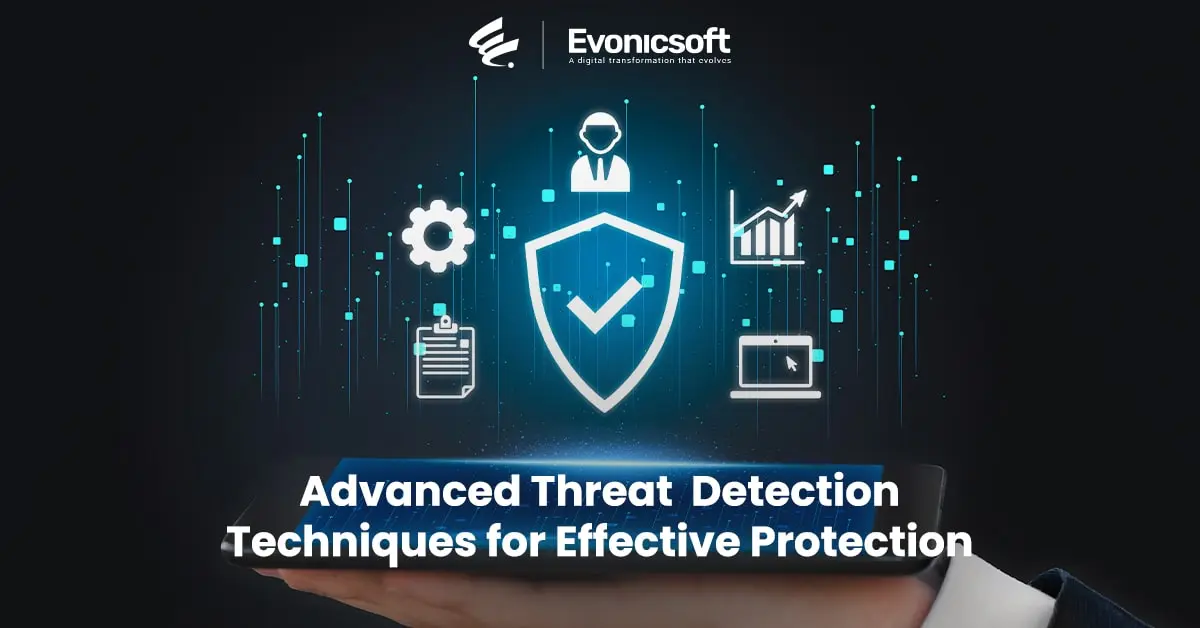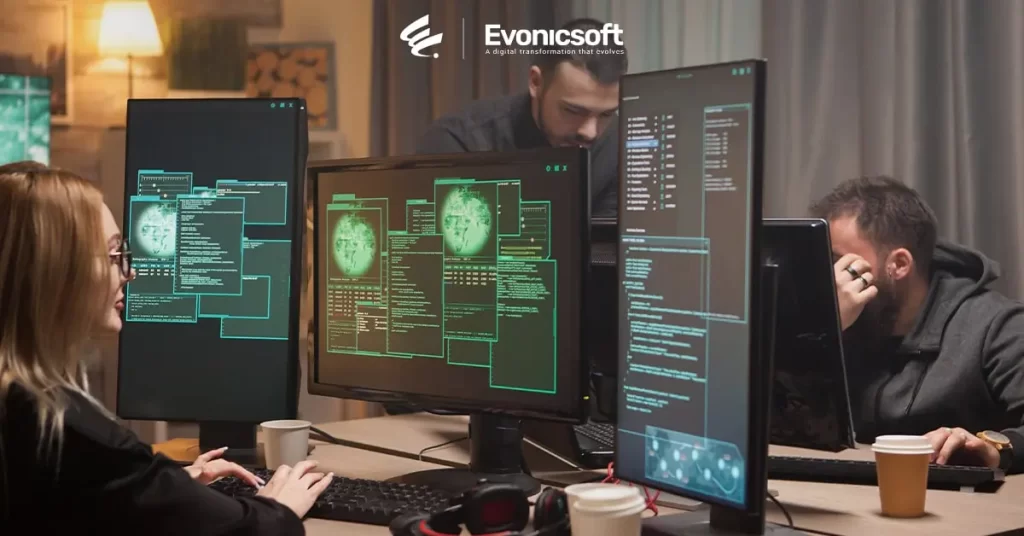
Adv. Threat Detection Techniques for Effective Protection
- Sami Ul Hassan
- 05/03/2024
- Cyber Security
In today’s digital landscape, cyber threats are constantly evolving and becoming more sophisticated. As a result, traditional security measures are no longer enough to protect organizations from cyber attacks. This is where advanced threat detection techniques come into play.
Advanced threat detection techniques are designed to identify and mitigate cyber threats that traditional security measures may miss. This article talks about why it’s important to have good ways to find threats and stop them. We’ll also look at some good methods for keeping your company safe from cyber attacks.
Why Is Advanced Threat Detection Important?
Cyber attacks are becoming increasingly common and can have devastating consequences for organizations. According to a report by IBM, the average cost of a data breach in 2020 was $3.86 million. This includes the cost of lost business, legal fees, and damage to the organization’s reputation.
Advanced threat detection is crucial for organizations because it allows them to identify and respond to cyber threats on time. This can help prevent data breaches and minimize the damage caused by cyber-attacks.
The Role of a Threat Detection Engineer
A threat detection engineer is responsible for designing, implementing, and maintaining advanced security breach detection systems. They work together with security analysts and other team members to find possible dangers and make plans to prevent them.
A cybersecurity engineer needs to know a lot about new cyber threats and how to find and stop them. They must also have strong analytical and problem-solving skills to identify and respond to threats in real time.
Advanced Threat Detection Techniques

There are several advanced threat detection techniques that organizations can use to protect themselves from cyber-attacks. Let’s examine some of the most efficient methods in detail.
Persistent Threat Detection System
A persistent threat detection system (PTDS) is a security solution that continuously monitors an organization’s network for potential threats. It uses advanced analytics and machine learning algorithms to identify patterns and anomalies that may indicate a cyber attack.
PTDS can detect both known and unknown threats, making it an essential tool for organizations looking to protect themselves from emerging cyber threats. It can also provide real-time alerts and recommendations for responding to potential threats.
Practical Threat Detection Engineering
Practical threat detection engineering is a proactive approach to threat detection that involves identifying potential vulnerabilities and developing strategies to mitigate them. This technique involves conducting regular security assessments and implementing security controls to prevent cyber attacks.
Practical threat detection engineering also involves training employees on how to identify and respond to potential threats. This can help create a culture of security within the organization and reduce the risk of human error leading to a cyber attack.
Identity Threat Detection and Response
Identity threat detection and response is a technique that focuses on protecting an organization’s digital identities. This includes user accounts, devices, and applications. By monitoring and analyzing user behavior, organizations can identify potential threats and take action to prevent them.
Identity threat detection and response can also help organizations detect and respond to insider threats. This is when an employee or contractor with authorized access to the organization’s systems knowingly or accidentally causes harm.
Insider Threat Detection Tools
Insider threat detection tools are designed to monitor and analyze user behavior to identify potential insider threats. These tools use machine learning algorithms to identify patterns and anomalies that may indicate malicious activity.
Insider threat detection tools can also provide real-time alerts and recommendations for responding to potential threats. This can help organizations prevent data breaches and other cyber attacks caused by insider threats.
Threat Analysis
Threat analysis is the process of identifying and assessing potential threats to an organization’s systems and data. This involves analyzing data from various sources, including network logs, security alerts, and threat intelligence feeds.
Threat analysis can help organizations identify potential vulnerabilities and develop strategies to mitigate them. It can also help organizations understand the tactics, techniques, and procedures used by cybercriminals, allowing them to better defend against cyber attacks.
Threat Detection Investigation and Response

Threat detection investigation and response is the process of identifying and responding to potential cyber threats. This involves analyzing data from various sources, including network logs, security alerts, and threat intelligence feeds.
Threat detection investigation and response can help organizations identify and respond to cyber threats in real time. This can help prevent data breaches and minimize the damage caused by cyber-attacks.
OT Threat Detection
OT (operational technology) threat detection is a technique that focuses on protecting industrial control systems (ICS) and other critical infrastructure from cyber-attacks. These systems are used to control and monitor physical processes, such as power plants, water treatment facilities, and transportation systems.
OT threat detection involves monitoring and analyzing data from these systems to identify potential threats. This can help prevent cyber attacks that could significantly impact public safety and national security.
Automated Threat Detection
Automated threat detection uses machine learning and artificial intelligence to identify and respond to cyber threats in real-time. This technique involves analyzing large amounts of data from various sources, including network logs, security alerts, and threat intelligence feeds.
Automated threat detection can help organizations identify and respond to cyber threats faster and more accurately than manual methods. This can help prevent data breaches and minimize the damage caused by cyber-attacks.
Enterprise Threat Detection
Enterprise threat detection is a comprehensive approach to threat detection that involves monitoring and analyzing data from all areas of an organization’s network. This includes endpoints, servers, applications, and cloud environments.
Enterprise threat detection can help organizations identify potential threats and respond to them in real time. It can also provide a holistic view of an organization’s security posture, allowing for more effective threat mitigation strategies.
Malware Detection
Malware detection is the process of identifying and removing malicious software from an organization’s systems. This includes viruses, trojans, worms, and other types of malware.
Malware detection involves using antivirus software and other security tools to scan systems for known malware signatures. It can also involve using advanced threat detection techniques, such as sandboxing and behavioral analysis, to identify and respond to unknown malware.
Conclusion
In today’s digital landscape, organizations must be proactive in protecting themselves from cyber threats. Advanced threat detection techniques can help organizations identify and respond to potential threats in real-time, preventing data breaches and minimizing the damage caused by cyber-attacks.
By implementing these techniques and staying up-to-date on the latest cyber threats, organizations can better protect themselves and their customers from the ever-evolving threat landscape.
Contact Evonicsoft directly for a free consultation.






